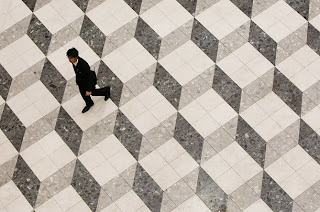In the JROTC classroom, Kenny Dawson is writing up the new directions for the annual scavenger hunt after school. Last year things didn't go so well so Kenny took on the challenge make the scavenger hunt new and improved.
1.) Is anything in focus?
- The subject of the photo is in focus, The words he are writing in focus. The paper on the board isn't in focus though, I believe it isn't in focus because
- My photo doesn't really have good contrast. It's darker than it should be.
- My photo follows many rules such as: The rule of thirds, simplicity, and cropping. My photo is candid,and it does fill the frame. It does contains an action which is writing, which is also an academic.
- There is no yellowing but there are tiny spots located on the picture, I believe the negative might have been damaged a little
- There are tiny spots located on the picture, I believe the negative might have been damaged a little.
- Yes!!!







